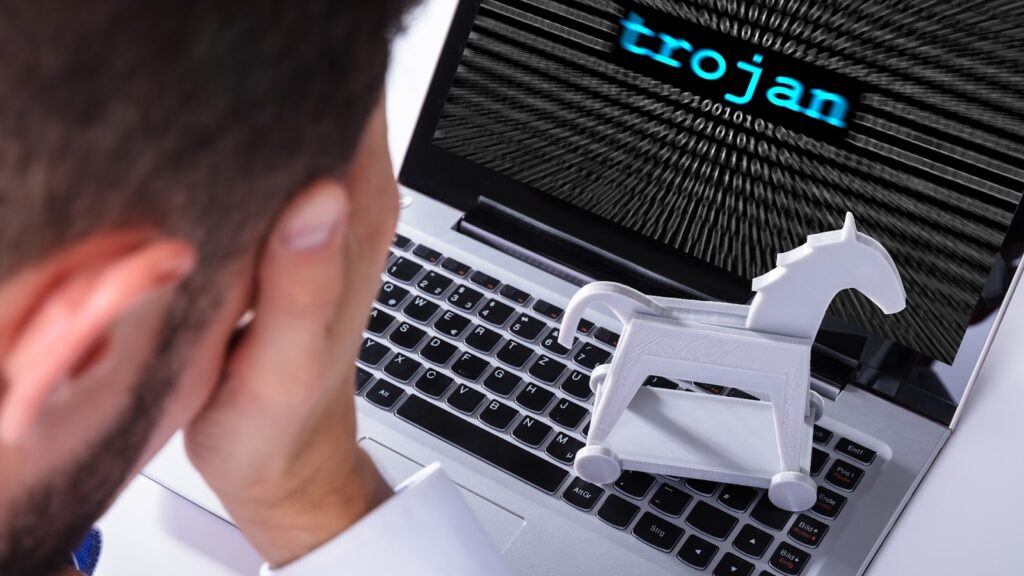Threatware is a type of malicious software that can cause serious harm to computer systems or networks. It comes in various forms, such as worms, trojans, fileless malware, spyware, and ransomware.
It is important to understand how threatware operates, and what measures can be taken to safeguard against it. In this article, we provide an in-depth look at threatware, including what it is, how it works, and the most essential steps you need to take to protect yourself and your business.
Our goal is to offer you a comprehensive overview of threatware and the best practices for preventing and responding to it. We will also answer some of the most frequently asked questions about threatware. Whether you are an individual or a business owner, understanding threatware is essential to keep your data and services safe.
Protect your business from threatware with WireX Systems advanced security technology! Our IR Platform, Contextual Capture™, and Network Protocols deliver comprehensive security intelligence in human-readable form, saving you time and effort when validating alerts and responding to security incidents.
Contact us now to reveal the scope and impact of potential threats without significant manual work or deep expertise.
What Is Threatware?
Threatware is a malicious software that infiltrates and damages computer systems without the user’s knowledge or consent. Cybercriminals often use it to gain access to sensitive information or disrupt networks.
Threatware can spread through various sources, such as malicious websites or email attachments.
This can cause severe damage, from stealing confidential data to disrupting system operations. To protect yourself and your business, take proactive steps such as keeping antivirus software up to date, upgrading operating systems and software, avoiding unknown emails and links, and creating secure passwords.
This will help mitigate the risks of threatware and safeguard your computer systems and sensitive information.
How Does Threatware Invade Computers?
Cybercriminals use various methods to infect computers, including email attachments, malicious websites and links, social engineering, worms and trojans , and file sharing networks.
Cybercriminals can trick users by creating fake websites or emails that appear legitimate, but actually install malware. Malware programs such as worms and trojans spread themselves to other computers and can gain access to sensitive data.
File sharing networks, such as peer-to-peer networks, are also a common method for spreading threatware.
Threatware is a serious threat that can steal data, hijack systems, and cause physical damage. To protect yourself, users should:
- Install antivirus software
- Avoid unknown email attachments and links
- Be cautious of social engineering tactics
- Avoid file-sharing networks
Different Types Of Threatware
Malicious software known as threatware can steal personal information, disrupt system operations, or damage hardware and software.
Worms
This type of malware can spread rapidly and cause damage to multiple computers, networks, and systems. These self-replicating programs can exploit security vulnerabilities to propagate across a network, launch denial of service attacks, steal data, and distribute other malware.
They can spread through emails, instant messages, file downloads, network shares, and removable drives, making them difficult to detect and remove. They can also hide in legitimate files or emails.
Trojans
This is a form of threatware that disguises as legitimate programs or files to gain access to a computer. They are most commonly used to install additional malware after gaining system access.
Once installed, they can be used to steal data, control the computer remotely, or install additional malware.

Fileless Malware
This is a growing threat to businesses and individuals, operating without leaving traces on a computer’s hard drive, making it challenging for traditional antivirus software and security measures to detect.
It is often delivered through harmful links, deceitful email attachments, or exploit kits capitalizing on known software vulnerabilities. Upon installation, fileless malware can access and exfiltrate sensitive information, deploy additional malware, or even seize control of a computer.
Detection and removal of fileless malware requires advanced methods for security teams to counteract.
Spyware
This is a form of threatware that stealthily monitors computer activity and steals data without user consent. Typically installed via malicious websites, email attachments, or pop-up ads, its primary objective is to gather sensitive information, including browsing history, passwords, and credit card details.
Once active, spyware is challenging to detect and eliminate, often operating silently in the background, amassing data or redirecting users to harmful websites and downloading further malicious software.
As a significant risk to computer security and personal privacy, spyware can pilfer personal information, surveil online behavior, and even gain remote access to computers.
Ransomware
This is a prevalent form of malware. Cybercriminals employ it to extort money from victims by encrypting their computer data, rendering it inaccessible, and demanding payment for a decryption key. The increasing ubiquity of ransomware makes it a significant cybersecurity concern.
Typically disseminated through phishing emails, malicious websites, or tainted software downloads, ransomware encrypts users’ files and displays a message demanding payment, usually in hard-to-trace cryptocurrencies like Bitcoin.
To protect against threatwares, ensure software is updated, install a robust antivirus program, use strong passwords and exercise caution when opening emails and attachments or clicking on suspicious links. Regular data backups can further mitigate risks, allowing for data restoration.
How Can You Prevent Malware Infection?
Preventing malware infections can save you significant trouble, and the proper measures can shield both you and your business from potential risks.
To enhance your safety, consider the following recommendations:
Don’t Open Emails From Unknown Senders
Defend against threatware by being cautious with emails from unknown senders. Examine the sender’s address and delete suspicious emails.
Avoid clicking on dubious attachments or links and be wary of phishing attempts.
Verify the authenticity of emails from seemingly trustworthy sources before proceeding.

Don’t Click On Any Links
To shield yourself from threatware, it is essential to refrain from clicking suspicious or untrustworthy links found in emails, social media posts, and websites. Even links appearing to originate from legitimate sources may be malicious and harbor threatware, so always verify the link’s source before proceeding.
Use Strong Passwords
Create strong passwords for all your accounts and avoid using your name, date of birth, or other readily known terms. Use letters, numbers, and symbols to make your passwords as secure as possible.
Install And Keep Your Antivirus Software Up To Date
Updating antivirus software is vital for protecting your computer from malware, including threatware. Regular updates help combat emerging threats, with many programs offering automatic updates.
Choose antivirus software with comprehensive protection and additional features, like a firewall and anti-spam.
Upgrade Your Operating System (OS) And Software
Keeping your operating system and software updated is critical for defending against threatware. Updated systems and software provide the latest security patches and features, protecting against emerging cyber threats.
Alternatively, use third-party tools like Windows Update or software updaters for automatic upgrades. These tools scan your computer for outdated software and prompt updates. However, some software may necessitate manual downloading and installation of updates, so carefully read the instructions.
After You Are Through With Your Activity, Log Out Of Public Computers
When accessing sensitive information or password-protected accounts, logging out from a public computer is essential. It prevents unauthorized access to your information and stops installing malicious software like spyware.
It also clears the computer’s memory, deletes installed programs or files, closes open applications, and restricts further access. It also helps safeguard your identity and personal data from theft.
Use Public Wi-Fi As Little As Possible
Public Wi-Fi offers a convenient and cost-effective means of internet access, but it also presents security risks. To protect yourself from potential risks, using a Virtual Private Network (VPN) when accessing the internet in public spaces is important.
Additionally, it is important to avoid accessing sensitive sites like banking portals or online stores while connected to public Wi-Fi. Finally, it is important to disconnect from a public Wi-Fi network after using it to prevent hackers from accessing the device.
Don’t wait for a threatware attack to strike – stay ahead of the curve with WireX’s proactive security practices. Our intelligence technology is human-readable and driven by automation, making it easier for entry-level personnel to investigate incidents.
Check out: Be Prepared: The Importance Of An Incident Response Plan.
Threatware Prevention Techniques For Individuals And Businesses
In today’s digital environment, protecting your company and yourself against cyber dangers is critical. Implementing robust preventive measures against such threats is essential.
Individuals can safeguard their computers by routinely updating their operating systems and security software, including downloading and installing their programs’ latest patches and updates.
Businesses need a comprehensive strategy to protect sensitive data, such as limiting access, backing up data, and employing multi-factor authentication.
Additionally, businesses should have systems in place to detect and respond to potential threats, such as monitoring networks and systems for unusual activity and devising a response plan in case of a security breach.
The use of a Virtual Private Network (VPN) to encrypt data and a firewall to block unauthorized access can further enhance protection.
Employee training on cybersecurity best practices and equipping them with the necessary tools to stay safe online should be a priority.

Detecting And Responding To Threatware
It is important to be aware of the different types of threatware and how to detect and respond to them. It can be anything from worms, trojans, fileless malware, spyware, and ransomware.
There are several indicators that can be used to detect malicious activity. These include:
Unusually high CPU or memory usage
Unusual network activity
Unusual disk activity
Unusual application behavior
Unusual system errors
Suspicious files or processes
Unauthorized changes to system settings
Recognizing indicators of malicious activity is essential for detecting threatware in a system. Disconnect the infected system from the network, perform a comprehensive system scan using updated antivirus software, implement preventative measures to avoid recurrence, and report the incident to the IT department or security team.
By understanding various threatware types, recognizing malicious activity indicators, and employing appropriate response strategies, users can effectively safeguard their system against harmful software.
Indicators Of Threatware And Steps For Mitigating Its Impact
It is important to be aware of the indicators of threatware and to take steps to mitigate its impact.
Indicators of threatware include:
- Unusually slow computer performance
- Unwanted pop-ups or advertisements
- Unauthorized changes to system settings
- Unfamiliar programs installed on the computer
- Unusual requests for user information
- Unusual emails or text messages
- Unusual activity on the computer
When you notice any indicators on your computer, it is important to act promptly to minimize the impact of threatware.
To do this:
- Identify the source of the threatware and isolate the affected computer from the network
- Conduct a thorough scan using a reliable antivirus or antimalware program
- Remove malicious software if detected
- Update all software and operating systems
- Implement strong passwords and two-factor authentication to secure user accounts.
Final Thoughts
The ever-present threat of threatware poses serious risks if not properly addressed.
Taking proactive measures to safeguard yourself and your business is essential, including updating your software and operating system, steering clear of dubious links and emails, and establishing secure passwords.
Moreover, businesses should implement a plan for detecting and responding to potential threats.
By comprehending the dangers associated with threatware and adopting the necessary precautions, you can help keep your data secure. Equipped with the right knowledge and protective measures, you can maintain a strong defense against malicious cybercriminals.
Our team of experts at WireX Systems is ready to help you strengthen your defenses. Reach out to us today and let us provide you with the assistance and guidance you need to safeguard your digital world.
To learn more about AI-related contents and articles, you may check these latest articles:
- AI Is Revolutionizing Security Analysis: How Artificial Intelligence Is Transforming The Industry
- AI Cyber Security: How Can Artificial Intelligence Detect Threats Faster?
- AI-Driven XDR: Next Level Threat Detection
FAQs
Should I remove riskware?
Riskware is software that has the potential to cause harm to your computer or data. It is not necessarily malicious, but it can be used for malicious purposes.
Therefore, it is highly recommended that you remove riskware from your computer and delete any associated files. If you are unsure of how to do this, you can consult an IT professional or a trusted security software provider.
What are the symptoms of computers with spyware?
Spyware can often be difficult to detect, but there are some signs that may indicate that your computer has been infected. These include: slow performance, unexpected pop-ups, unexpected changes in your browser settings, and new toolbars or plug-ins.
Additionally, if you notice that your computer is sending out large amounts of data or is receiving large amounts of data, this could be a sign that your computer has been infected with spyware.
Is threatware a risk you face when opening an unknown attachment?
Yes, opening an unknown attachment is one of the most common ways for threatware to invade a computer. To protect yourself, open attachments from trusted sources only. Additionally, scan any attachments with an up-to-date antivirus program before opening them.
What is the most common malware threat?
The most common type of malware is ransomware, which is a type of malicious software that encrypts files and holds them hostage until a ransom is paid. Additionally, trojans , worms, and spyware are also common types of malware threats.
Is spyware a serious threat to computers?
Yes, spyware can be a very serious threat to computers. Spyware can collect personal information, such as passwords, banking information, and other sensitive data.
Additionally, spyware can be used to gain access to a computer or network and spread other types of malware.




